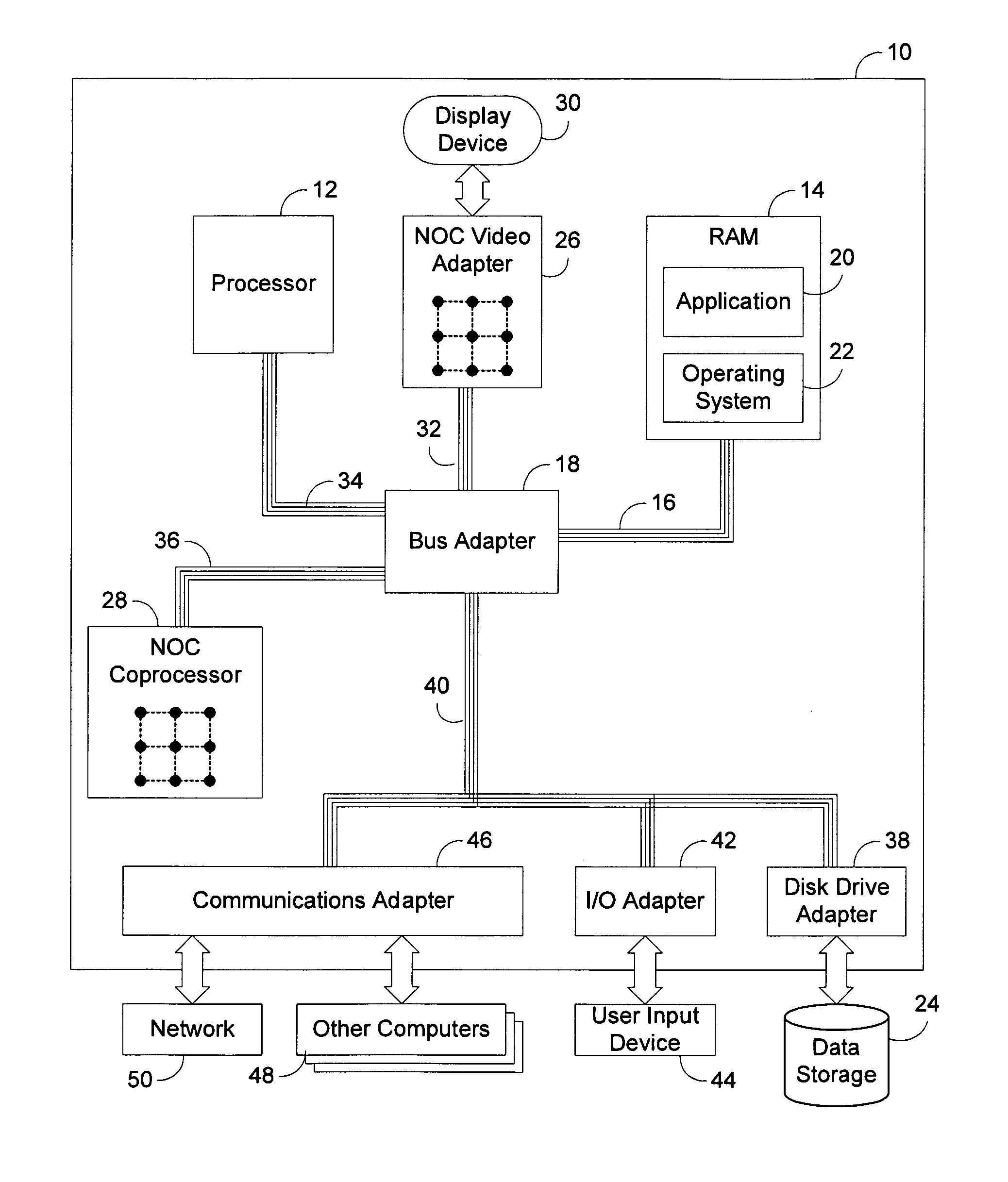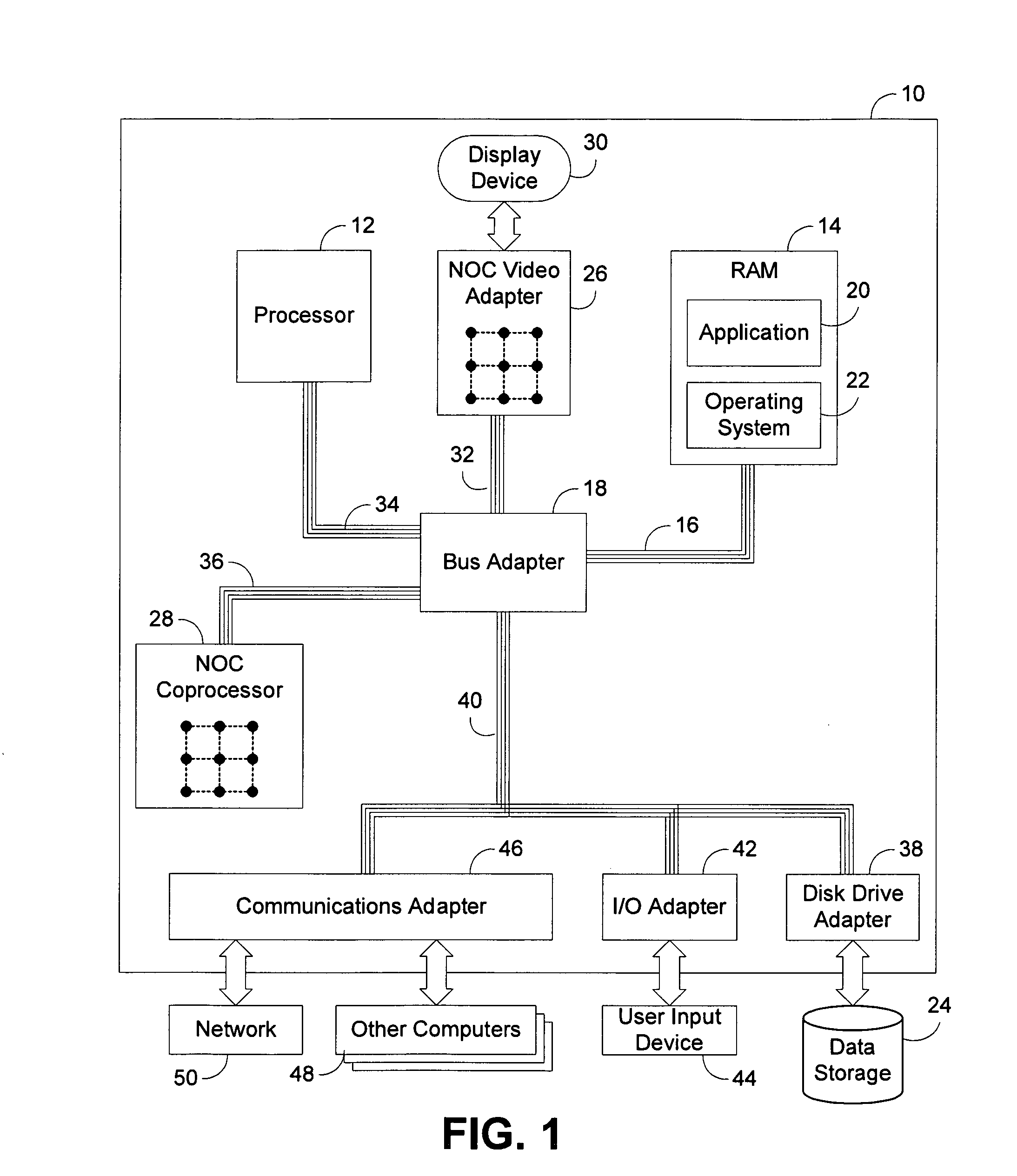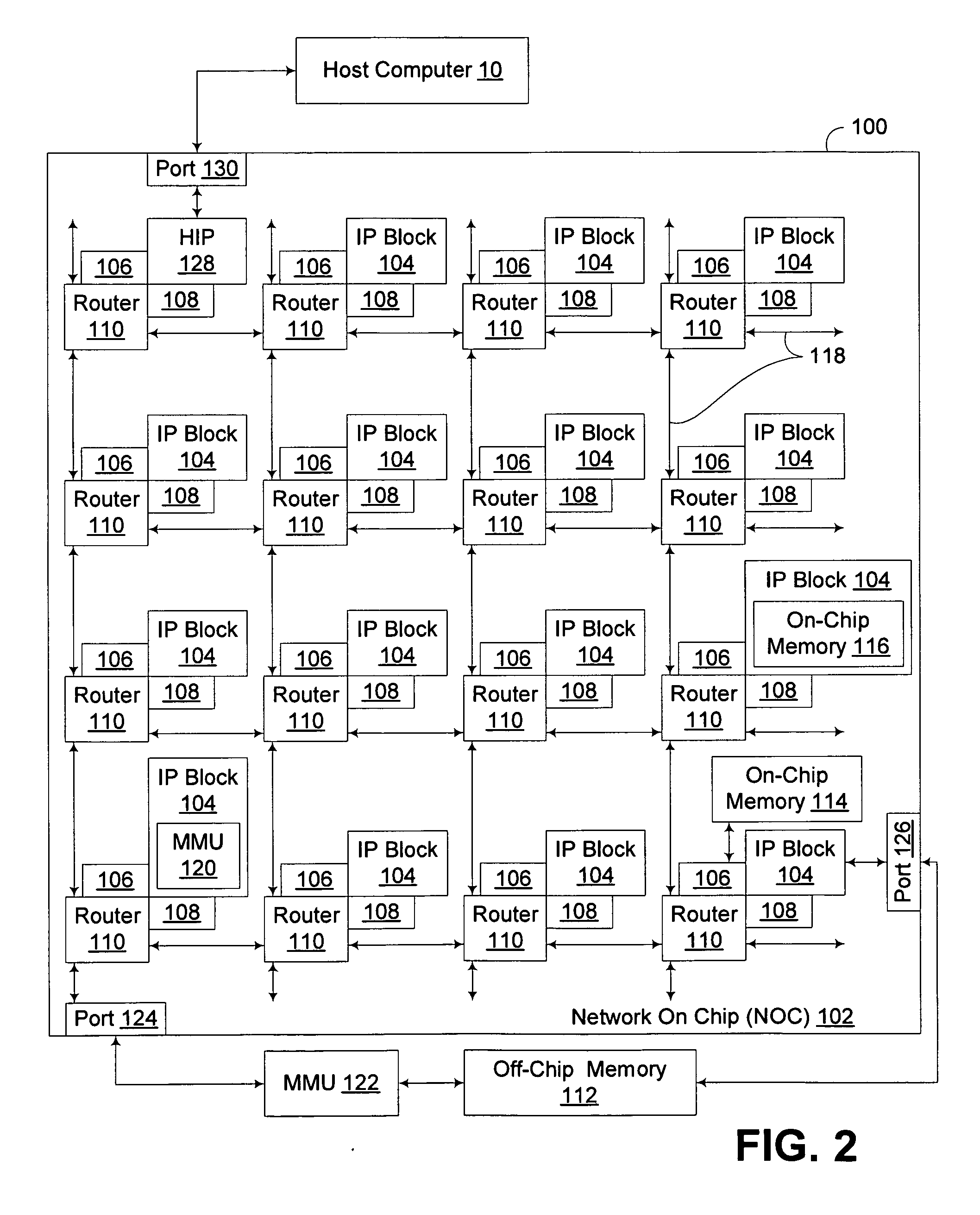Hybrid rendering of image data utilizing streaming geometry frontend interconnected to physical rendering backend through dynamic accelerated data structure generator
a data structure and image data technology, applied in the field of data processing, can solve the problems of low computational power, rasterization suffers from several drawbacks, and modern monitors display images, and achieve the effect of parallelizing the generation of ads
- Summary
- Abstract
- Description
- Claims
- Application Information
AI Technical Summary
Benefits of technology
Problems solved by technology
Method used
Image
Examples
Embodiment Construction
[0038]Embodiments consistent with the invention utilize a hybrid rendering architecture to interface a streaming geometry rendering frontend with a physical rendering backend using a dynamic accelerated data structure (ADS) generator. The dynamic ADS generator utilizes an algorithm that effectively parallelizes the generation of the ADS, such that a plurality of parallel threads of execution may be used to generate an ADS. In some embodiments, the dynamic ADS generator also enables the physical rendering backend to begin using the ADS prior to completion of the ADS by the dynamic ADS generator. By doing so, both the frontend and backend rendering processes, as well as the ADS generation process, are amendable to parallelization, enabling real time rendering using physical rendering techniques such as ray tracing and photon mapping. Furthermore, conventional streaming geometry frontends such as OpenGL and DirectX compatible frontends can readily be adapted for use with physical rende...
PUM
 Login to View More
Login to View More Abstract
Description
Claims
Application Information
 Login to View More
Login to View More - R&D
- Intellectual Property
- Life Sciences
- Materials
- Tech Scout
- Unparalleled Data Quality
- Higher Quality Content
- 60% Fewer Hallucinations
Browse by: Latest US Patents, China's latest patents, Technical Efficacy Thesaurus, Application Domain, Technology Topic, Popular Technical Reports.
© 2025 PatSnap. All rights reserved.Legal|Privacy policy|Modern Slavery Act Transparency Statement|Sitemap|About US| Contact US: help@patsnap.com



